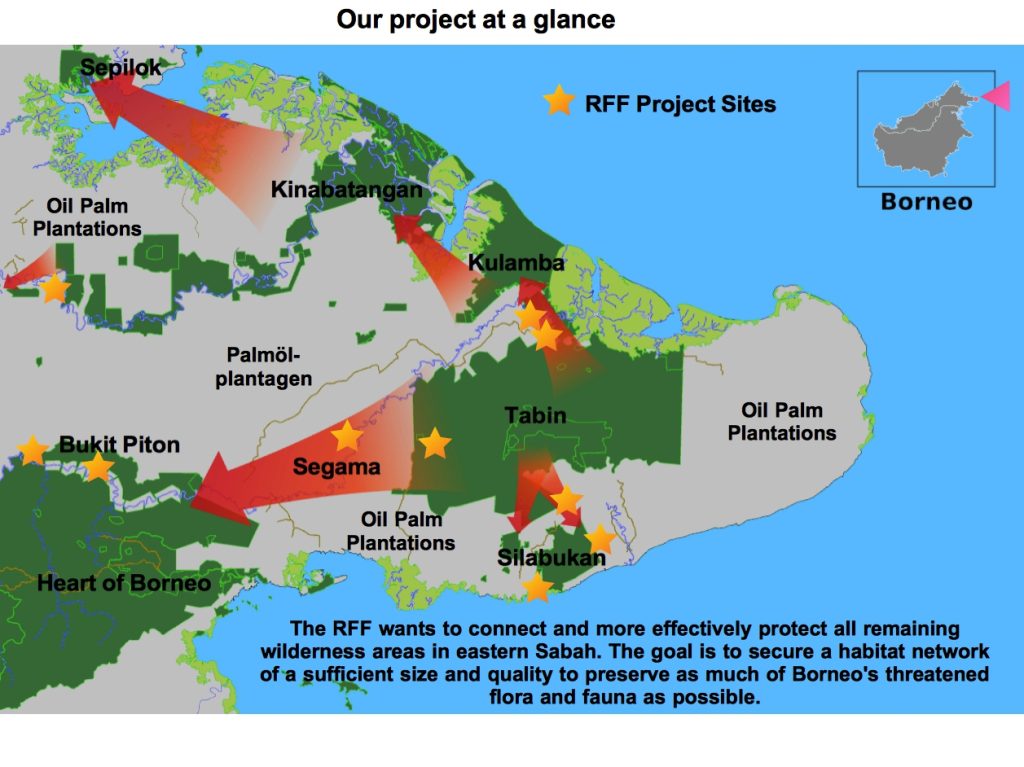The Bad News First
Admittedly, the current global situation offers little reason for optimism. Wars, poverty, social conflicts, and countless other issues dominate our perception. But there is worse to come: threatening to multiply all human problems and, on top of that, wipe out millions of other species:
A global loss of our very foundations of life due to the climate catastrophe and the collapse of biodiversity is emerging as a probable scenario! At the same time, there are politicians coming to power who apparently want to use their terms in office–driven by destructive fanaticism – to inflict the greatest possible harm on humanity and the planet in the shortest possible time.
The Largest Mass Extinction Since the End of the Dinosaurs Has Begun
Each day, probably more than 100 mostly unknown and inconspicuous species become extinct, primarily as a result of deforestation of rainforests. Countless species have been so drastically decimated within just a few decades that only small, isolated remnants remain. Some species, like the Sumatran rhino, have dropped to mere double-digit population sizes. The Bornean banteng and possibly already the Bornean elephant have shrunk to only a few hundred individuals. And many other species are also dwindling rapidly. They may not yet be extinct, but they are only one small step away.
If the gene pool and/or habitat are too small, a population is effectively doomed to extinction–even if a few specimens can still be found here and there.
The Good News
As dire as it may look at the moment, we must not allow ourselves to be intimidated by all the negative news! We do not have to stand by and watch helplessly! After all, there are solutions for virtually every problem, and there are also positive developments. Word is slowly getting around that we only have a future if we manage to stabilize the climate and abandon the claim to monetize every last hectare of nature. More and more people realize: To save the climate and biodiversity, we must restore critical ecosystems on a large scale! This is especially true for tropical rainforests, which harbor the largest number of species while making a particularly important contribution to cooling the planet. Borneo’s forests are among the most species-rich and carbon-rich rainforests on Earth!
And here is the amazing part: We can do it! We can turn back the clock! We can restore natural landscapes! Through our projects in Borneo, for example, we are demonstrating that it is possible to tackle the biodiversity crisis and the climate crisis simultaneously while also improving people’s living conditions. And the know-how needed for this grows every day! It is not too late yet, but time is of the essence!
Our Approach
Our approach is first to create the foundation for the survival of threatened flora and fauna by establishing well-protected, well-connected habitats of sufficient quality and size. This will allow viable populations of currently endangered species to develop and be maintained in the long term–islands of life amid endless monocultures.
Our Vision
Once the time is right, biodiversity can quickly spread out again from these islands of life to newly available areas–something already impressively evident after only a few years on our small reforestation plots. And there is reason for hope: in the near future, large areas will become available for ecosystem restoration. On the one hand, awareness of the need to restore natural ecosystems on a large scale is growing, and therefore more resources may be made available. On the other hand, it seems likely that industrial agriculture will degrade the soil (for example in Borneo) to the point where it will no longer be profitable to cultivate these depleted, eroded soils. At that point, these areas, having become “useless,” can more easily be claimed for nature conservation. And restoration is always possible–as long as the original species are still around, and we do it properly!
Yearly Review 2024
Following record-breaking income in the previous year, we experienced a massive decline in 2024 to just under 205,000 € (31% of 2023). Nevertheless, even with reduced income, we were able to make progress in all our project areas.
Our largest contribution once again came from the substantial support of BOS Germany (130,750 €), followed by Nepada Wildlife e.V. (10,000 €).
Contributions from private individuals and supporting members amounted to just under 64,000 €, an 11% decrease.
In 2024 we spent a total of around 591,000 €. About 94% of the allocated funds were used directly in Sabah for land acquisition, reforestation measures (including project management), and expansion of infrastructure. Of these funds, approximately 280,000 € (47%) were allocated for purchasing another piece of oil palm plantation. About 4% were used for administrative costs and 2% for travel expenses.
Developments in 2024
Progress in Expanding Our Infrastructure in Sabah
In 2024 we significantly improved our infrastructure in Tabin. We finally have our own house with enough space for our team, functioning water, wastewater and solar power supply, a weather station, a well, and a newly designed nursery with an irrigation system. Previously, we had to work under much more difficult conditions. In 2025, the camp will be further expanded to accommodate guests. We are also currently constructing new accommodations for our team in Silabukan, which will greatly improve working conditions.

(Map description: Dark green indicates protected forest, light green shows mangrove swamps, and gray represents oil palm plantations. The yellow stars mark the RFF project areas, while the red arrows illustrate the planned wildlife corridors.)
Progress in Land Acquisition in Tabin
At the end of 2024, we invested 280,000 € to acquire another 32 ha of oil palm plantation in the Tabin-Kulamba Wildlife Corridor area. Until now, we had already acquired 65 ha in the same area and, with the help of the Sabah Forestry Department, managed to convert about 2,300 ha into protected areas. The newly purchased land is another piece of the puzzle to connect Tabin with the conservation areas in the north. It is to be restored beginning in 2025 and then integrated into the Tabin Wildlife Reserve.
Land acquisition is crucial for restoring nature’s rights.
Unfortunately, there are still many other essential tracts of land that we cannot currently afford to buy. With far too limited resources, we are racing against time! If the key areas needed to reconnect the already too small remnants of lowland rainforest are not secured soon, large mammal populations could collapse. Bornean elephants, Bornean bantengs, and countless other species could become extinct within just a few decades if the fragmentation of their last habitats is not resolved very soon. However, if we manage over the coming years to piece the landscape back together and create a sufficiently large network of high-quality protected areas, Borneo’s breathtaking diversity can at least recover in these areas and hopefully be preserved until better times. What we are currently doing on a small scale can be applied to large areas with adequate funding. We urgently need more support for this!
Progress in Bukit Piton
At the beginning of this new year, we resumed the large-scale liberation of overgrown trees on reforestation plots initiated by other organizations. This measure is needed because previous maintenance efforts were calculated too narrowly, and the projects were discontinued too early. Countless young trees are overgrown by invasive vines and gradually die off.
We have stepped in to help at Bukit Piton Forest Reserve since 2021, saving as many trees as possible so a closed canopy can form again. Once the canopy is established, weeds diminish due to lack of light, and the forest can regenerate.
This area is particularly important because Bukit Piton is one of the last remaining lowland rainforest areas in Sabah, providing refuge for numerous threatened species, including around 400 orangutans, Bornean elephants, Storm’s storks, clouded leopards, and much more.
Progress in Silabukan
Already in 2021, we replanted all illegally used plantation areas in the southeast of the Silabukan Forest Reserve with native tree species and, through our presence, completely halted further deforestation. In 2024, we also began restoring illegal plantation areas in the southwest of Silabukan.
In doing so, we specifically integrated some people who had previously been involved in illegal deforestation and now work for us in reforestation activities. While this was a longer and more challenging process, it has had a lasting impact.
We are convinced that we have to work with people, not against them! This means engaging them in conversation and providing incentives to change destructive behavior–both out of social responsibility and simply to be successful at all.
Many Thanks Again for Your Ongoing and Future Support!
The RFF Team, January 2025


